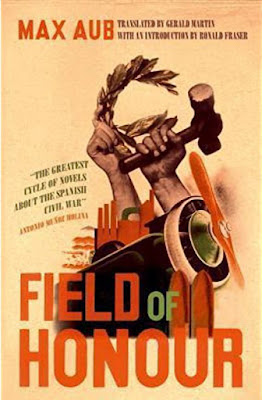The Truth about the Harry Quebert Affair
 I purchased this novel with high hopes - the blurb sounded
just my thing: a story about an author accused of murder, and a young writer
and protégé who must assist his mentor in solving the crime through writing a
novel of his own. A metafictional premise, in other words, with a picture from
Edward Hopper on the front cover. I should have been more weary of the heavy
bold title which obscures the Hopper painting; there is something emblematic in
this in terms of the promise of the book.
I purchased this novel with high hopes - the blurb sounded
just my thing: a story about an author accused of murder, and a young writer
and protégé who must assist his mentor in solving the crime through writing a
novel of his own. A metafictional premise, in other words, with a picture from
Edward Hopper on the front cover. I should have been more weary of the heavy
bold title which obscures the Hopper painting; there is something emblematic in
this in terms of the promise of the book.
In reviewing a highly successful novel written by a young
European writer one is very conscious of not sounding like a bitter-and-twisted
would-be-but-can't-be bestseller author oneself, jealous of the twists and
turns of another's life. Keeping this in mind, I will do my best to be fair on
the novel and author and begin with what works well (perhaps this is where the
grab quotes normally come from).
The novel has been compared to Stief Larsson's The Girl with
the Dragon Tattoo. Yes, it has a small town setting with a big city backdrop,
and hints of corruption of the adult world (police, publishing, even perhaps
schools and universities). The protagonist is an investigator/writer looking
into the past and reconstructing events in a way that has left the authorities
baffled (or unwilling to expose the truth). However, Larsson's work is clearly
more developed in all these areas, particularly in his exposition of the
political sphere. One writer I was reminded of was Carlos Ruiz Zafon, with the
Shadow on the Wind and its subsequent follow-up novels. I don't think the novel
is as good as Shadow, but what it has in common is the concentration on the
young investigator; the idea of an intensely romantic and impossible
relationship and its effects over time; they are both 'literary thrillers' with
'twists and turns'. So, this is the genre. Although I was drawn to what I
thought were metafictional elements, and they are present in the novel, a more
accurate portrayal of the book is the equivalent of the Hollywood blockbuster:
the 'truths' in the novel are those found within the genre and not within the
life it might be said to draw from. For example, a young writer who becomes a
celebrity on the basis of his first novel; the offer of a two million dollar
writing deal for the follow up; a police inspector who drinks beer with the
young novelist and shares all his findings freely and collaborates with an
outsider, and so on. As a writer myself (if not a would-be-best-seller) I found the opening particularly hard to deal with, because the clichés seemed stacked against each other, even at a sentence level. I wondered, is something lost in translation? But I persevered and I did find the novel successful as a page turner, so long as one puts literary pretentions to one side and very willingly suspends disbelief in terms of probabilities. The novel draws together the past and the present successfully and assembles a host of suspects who each play a part in the action. The premise of a writer reconstructing the past allows Dicker to side-step the issue of how a scene could be known from a narrative perspective: the novel continues to reconstruct conversations and thoughts in a way that typical crime writing cannot (typical crime writing being much more concerned about ontological matters when it comes to the idea of how we can know what we know). To compare to another blockbuster, Dan Brown's The Da Vinci Code merely played with the detective genre but didn't feel limited by its tendency towards realism and connection to the real-world. If Dicker can be, before the age of thirty, compared to writers like Brown, Larsson and Zafon then he might be on to something: a highly successful career as a writer who connects with a broad public via the literary thriller genre. Whether he writes successful sentences might be a moot point.



Comments
Post a Comment